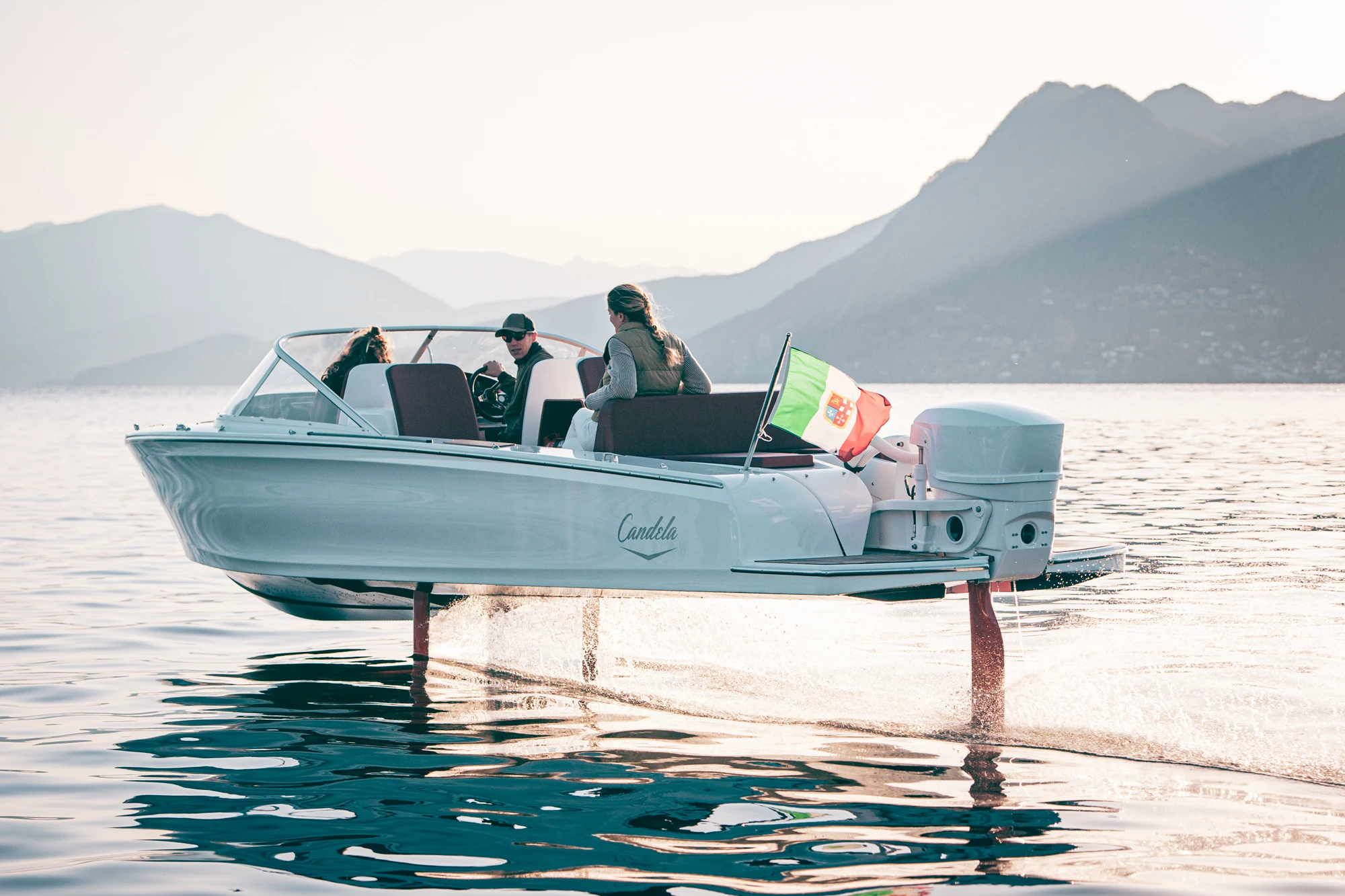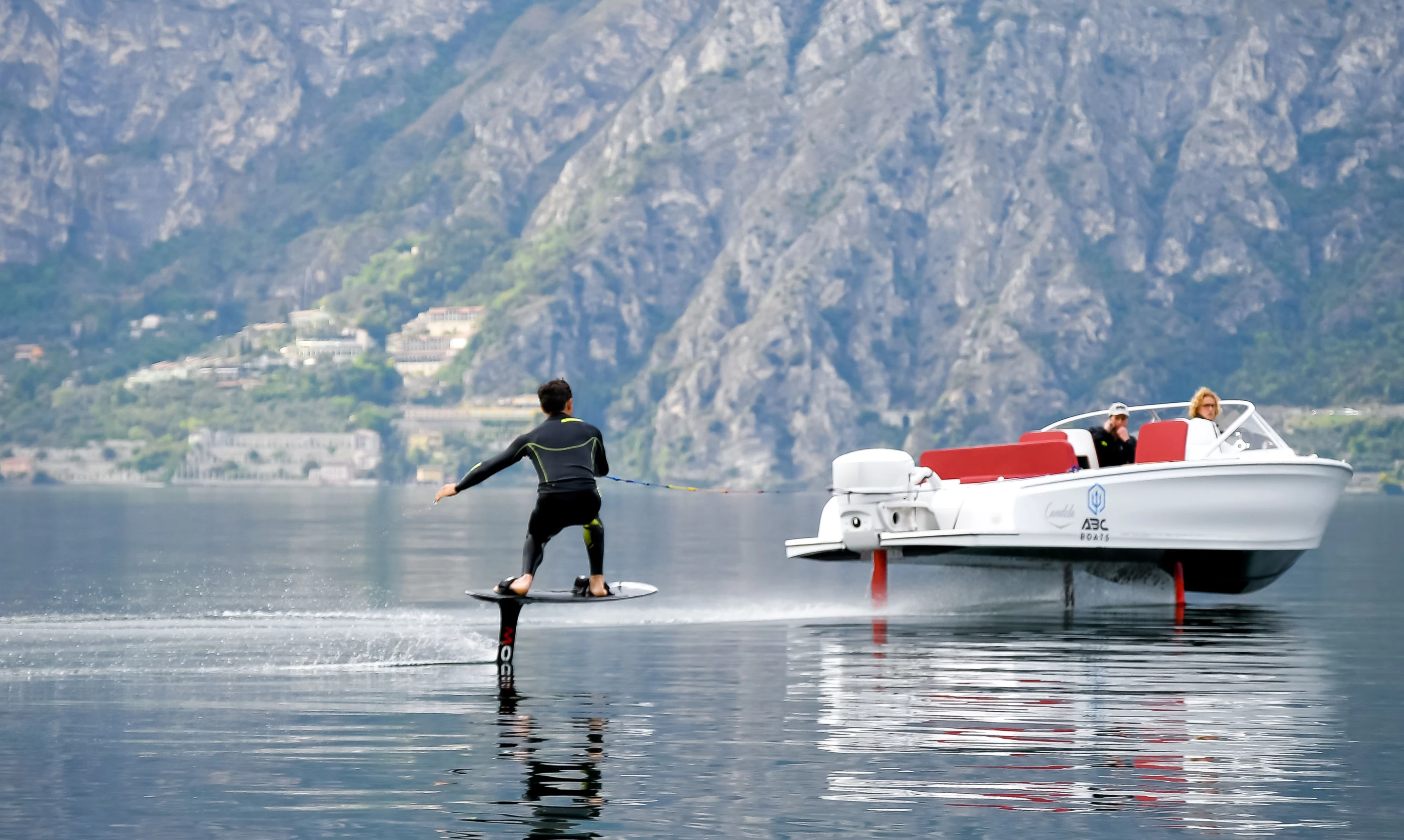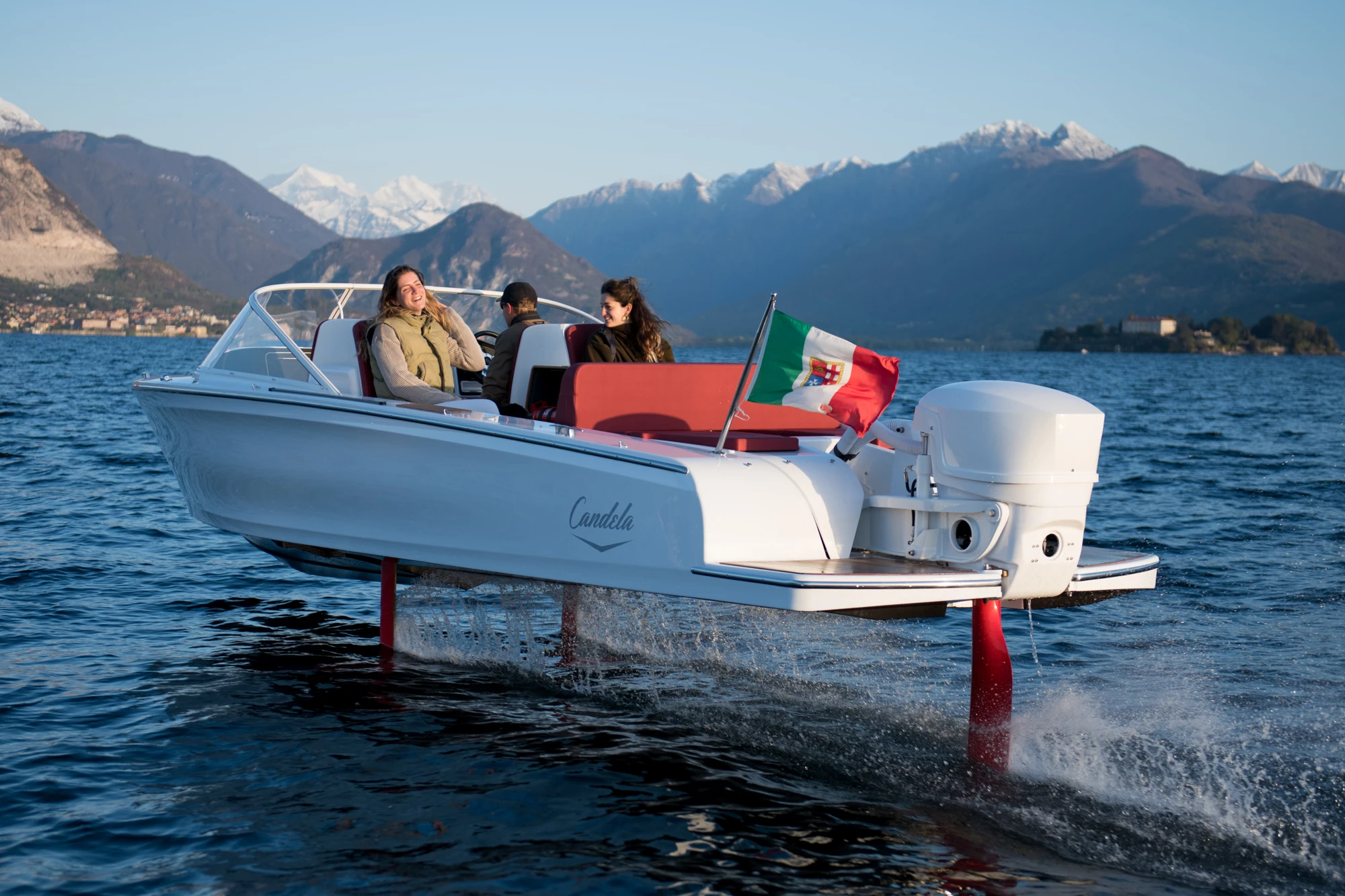Batteries are taking their sweet time to improve, but Sweden's Candela isn't waiting around. This company has built a clever, low-drag hydrofoiling boat that barely touches the water, giving it a super-smooth, efficient ride and three times the range of other electric boats. The C-7 is already in production, having passed Swiss certification tests the company describes as the world's toughest. With its automatically actuating hydrofoils and electric propulsion system, it's a unique and seriously practical configuration that's much more than an eye-popping novelty.
Hydrofoils, of course, are primarily designed for efficiency. As they rise up out of the water, they reduce hydrodynamic drag to a fraction of what the hull normally causes. That's handy on a gasoline-powered boat, but an absolute game-changer for an electric; gasoline carries so much more energy per kilogram than lithium batteries, and boats use so much more energy than cars to drag themselves through the water, that electric boats have been seriously range-restricted as a result.
By incorporating hydrofoils, the Candela C-7 achieves a top speed of 30 knots (35 mph, 56 km/h), and a range of 50 nautical miles (57 miles, 93 km) at 22 knots (25 mph, 41 km/h) on a single charge of its 40-kWh battery. That might not sound like a ton, but Candela says it's about three times the range that other electrics on the market can offer. There are others that go further – the Sarvo 37, for example, can go 100 nautical miles (114 miles, 186 km) for twice the range. But it uses a colossal 350-kWh battery, nearly nine times the size of the C-7's, to get there.

Efficiency is not the only benefit here; the C-7 is virtually silent in operation, and even at speed it leaves a tiny 5-cm (2-in) wake compared to a regular boat; both of these factors will be appreciated by wildlife and other water users alike.
And its ability to rise above the water level makes it a much smoother ride in choppy conditions than a regular boat; the hull won't get a smack from a wave less than 1.1 m (3.6 ft) high, so you can glide along in silent serenity as your buddies in a standard boat get thumped and bumped all over the place. This will be an amazing machine for taking video footage from.
The system is not simple, though. The boat has to fit on a trailer, and also needs to operate in shallow water, so Candela had to make the carbon-composite foil system fully retractable. The front foil is simple enough, pulling back into the body of the boat on electric actuators. The rear foil is more of a challenge; the custom-designed propulsion unit hangs beneath it, and the whole thing is connected back up to the outboard motor – well, what would be the outboard motor if that's where the motor actually sits.

Either way, that big outboard unit has to tilt up a long way to get the prop out of harm's way in the shallows, so the whole thing is mounted on a big hydraulic arm as well as a tilting system.
Hydrofoils are also tricky to fly, and in order to make the C-7 simple to pilot, Candela has had to design its own in-house "flight control" system. Using ultrasonic sensors, gyroscopes, accelerometers and GPS, the C-7's digital flight controller automatically adjusts the angle of the foils 100 times per second to keep things smooth, safe and pointed in the right direction.
It ain't cheap; Candela sells these things for around US$240,000. But the experience will be pretty amazing, it's a very clever way to pull vastly more range out of a battery, and all eyes will certainly be on the C-7 the second it rises up out of the water. Candela is offering test drives now, including in Venice, where Candela says its boats can significantly reduce the wake pollution that is responsible for damage to the city's buildings.
Check out a video below.
Source: Candela











